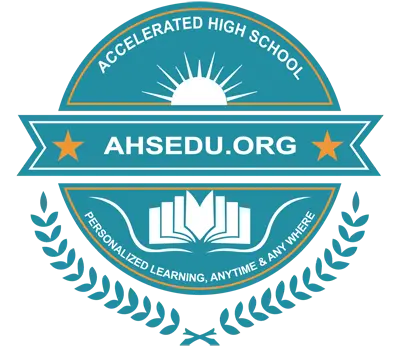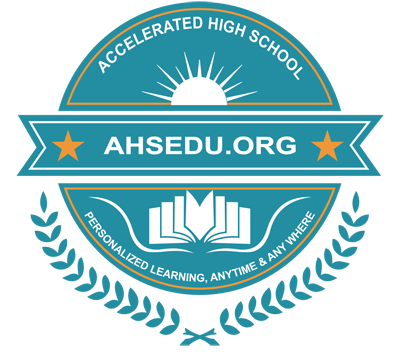Accelerated High School
Standardized Curriculum of General Science-III
Scientific and technological advances have proliferated and now permeate most aspects of life in the 21st century. It is increasingly important that all members of our society develop an understanding of scientific and engineering concepts and processes. Learning how to construct scientific explanations and how to design evidence-based solutions provides students with tools to think critically about personal and societal issues and needs. Students can then contribute meaningfully to decision-making processes, such as discussions about climate change, new approaches to health care, and innovative solutions to local and global problems.
Mission:
All students will understand the scientific concepts and processes required for personal decision-making, participation in civic life, and preparation for careers in STEM fields (for those who choose).
Vision:
Prepare students to become scientifically literate individuals who can effectively:
- Apply scientific thinking, skills, and understanding to real-world phenomena and problems;
- Engage in systems thinking and modeling to explain phenomena and give a context for the ideas to be learned.
- Conduct investigations, solve problems, and engage in discussions;
- Discuss open-ended questions that focus on the strength of the evidence used to generate claims.
- Read and evaluate multiple sources, including science-related magazine and journal articles and web-based resources,, to gain knowledge about current and past science problems and solutions and develop well-reasoned claims.
- Communicate ideas through journal articles, reports, posters, and media presentations that explain and argue.
Spirit and Intent:
The AHS science curriculum has been prepared and standardized following The New Jersey Student Learning Standards for Science (NJSLS-S), which describe the expectations for what students should know and be able to do as well as promote three-dimensional science instruction across the three science domains (i.e., physical sciences, life sciences, and earth and space sciences). From the earliest grades, the expectation is that students will engage in learning experiences that enable them to investigate phenomena, design solutions to problems, make sense of evidence to construct arguments, and critique and discuss those arguments (in appropriate ways relative to their grade level).
The foundation of the NJSLS-S reflects three dimensions: science and engineering practices, disciplinary core ideas, and cross-cutting concepts. The performance expectations are derived from the interplay of these three dimensions. These three components must be integrated into all learning experiences. The three dimensions within each standard document are intentionally presented as integrated components to foster sense-making and design solutions to problems. Because the NJSLS-S is built on the notions of coherence and contextuality, each of the science and engineering practices and cross-cutting concepts appears multiple times across topics and at every grade level. Additionally, the three dimensions should be an integral part of every curriculum unit and should not be taught in isolation.
Three Dimensions of AHS Science Curriculum:
The performance expectations reflect the three dimensions and describe what students should know and be able to do. In layman’s terms, they are “the standards.” They are written as statements that can be used to guide assessment and allow for flexibility in the way that students can demonstrate proficiency. The example below is provided to illustrate the interconnected nature of the NJSLS-S components.
Becoming familiar with science practices and cross-cutting concepts is a critically important first step in designing learning experiences reflective of the three dimensions. A description of each of the science and engineering practices and the cross-cutting concepts can be found in the next sections. Further, for students to develop proficiency in the NJSLS-S, they will need to engage in learning experiences that are meaningful, cumulative, and progressive. Learning experiences are designed to be meaningful, go beyond reading about science concepts, and provide opportunities for students to be active learners and make sense of ideas. Cumulative learning experiences provide opportunities for students to use and build on ideas that they have learned in previous units. Progressive learning experiences provide multiple occasions for students to engage in ways that enable them to improve their construction of explanations and solutions over time by iteratively assessing them, elaborating on them, and holding them up to critique and evidence.
Curriculum for Grade-III General Science:
Standard 1: Motion and Stability: Forces and Interactions.
Learning Objectives:
- Plan and investigate to provide evidence of the effects of balanced and unbalanced forces on the motion of an object.
- Make observations and/or measurements of an object’s motion to provide evidence that a pattern can be used to predict future motion.
- Ask questions to determine cause and effect relationships of electric or magnetic interactions between two objects not in contact with each other.
- Define a simple design problem that can be solved by applying scientific ideas about magnets.
Topics of AHS-GS:
Forces and Motion
- Types of forces: push, pull, gravity
- How forces affect motion
- How does mass affect motion
- Forces present in nature
- Balanced and unbalanced forces
- Compare the speeds of moving objects
Electricity
- Introduction to electricity
- Sources of electricity
- Conductors and insulators
- Everyday uses of electricity
- Introduction to static electricity and charged objects
Magnets
- Identify magnetic and non-magnetic objects
- Identify different parts of a magnet(north pole, south pole)
- Identify magnets that attract and repel
- Compare strengths of magnetic forces
Energy and Sources
- Forms of energy: heat, light, sound.
- Identify sources of energy
- Renewable and non-renewable energy
Heat and Thermal Energy
- Predict heat flow
- Predict temperature changes
- How is temperature related to thermal energy
Standard 2: From Molecules to Organisms: Structures and Processes
Learning Objectives:
- Develop models to describe that organisms have unique and diverse life cycles, but all have in common birth, growth, reproduction, and death.
Topics of AHS-GS:
Plants
- Plant Cell
- Identify different parts of plants
- Classify fruits and vegetables as plant parts
- How do plants make food?
- Read and construct flowering plant life cycle diagrams
- How do flowering plants make new plants?
Animals
- Animal Cell
- Read animal life cycle diagrams
- Construct animal life cycle diagrams
- Compare stages of an animal life cycle
- Compare different animals' life cycles
- Benefits of group behavior: leaf-cutter ants
- Human organs and their functions
Standard 3: Ecosystems: Interactions, Energy and Dynamics
Learning Objectives:
- Construct an argument that some animals form groups that help members survive.
Topics of AHS-GS:
Ecosystems and Interactions
- Introduction to ecosystems
- Role of plants in ecosystems
- Role of animals in ecosystems
- How does matter move in food chains
- Interpret food webs
- Human impact on ecosystems
Standard 4: Heredity: Inheritance and Variation of Traits
Learning Objectives:
- Analyze and interpret data to provide evidence that plants and animals have traits inherited from parents and that variation of these traits exists in a group of similar organisms
- Use evidence to support the explanation that traits can be influenced by the environment.
Topics of AHS-GS:
Heredity
- Match offspring to parents using inherited traits
- Identify inherited and acquired traits
- Inherited and acquired traits: use evidence to support a statement
- Read a plant pedigree chart
- Read an animal pedigree chart
Standard 5: Biological Evolution: Unity and Diversity
Learning Objectives:
- Analyze and interpret data from fossils to provide evidence of the organisms and the environments in which they lived long ago.
- Use evidence to construct an explanation for how the variations in characteristics among individuals of the same species may provide advantages in surviving, finding mates, and reproducing.
- Construct an argument with evidence that in a particular habitat, some organisms can survive well, some survive less well, and some cannot survive at all.
- Claim the merit of a solution to a problem caused when the environment changes and the types of plants and animals that live there may change.
Topics of AHS-GS:
Fossils
- Introduction to fossils
- Compare fossils to modern organisms
- Compare ancient and modern organisms: use observations to support a hypothesis
Adaptations
- Introduction to adaptations
- Animal adaptations: beaks, mouths, and necks
- Animal adaptations: feet and limbs
- Animal adaptations: skins and body coverings
Standard 6: Earth’s System
Learning Objectives:
- Represent data in tables and graphical displays to describe typical weather conditions expected during a particular season.
- Obtain and combine information to describe climates in different regions of the world.
Topics of AHS-GS
Earth and It’s Features
- Bodies of water
- Water on Earth
- Natural resources
- Identify Earth’s land features
- Layers of the Earth.
- Earth's natural features: mountains, valleys, plains.
Rocks and Minerals
- Classify rocks and minerals by color, shape, and texture
- Identify minerals using properties
- Identify rocks using properties
- Classify rocks as igneous, sedimentary, or metamorphic
Weather and Climate
- Read a thermometer
- Compare temperatures on thermometers
- What's the difference between weather and climate?
- Weather and climate around the world
- Weather vs. climate?
Earth’s Events
- Classify changes to Earth's surface I
- Classify changes to Earth's surface II
- Find evidence of changes to Earth's surface
Standard 7: Engineering Design
Topics of AHS-GS:
Units and Measurement
- Choose units of time
- Choose customary units of distance
- Choose metric units of distance
- Abbreviate time and length units
- Abbreviate mass and volume units







